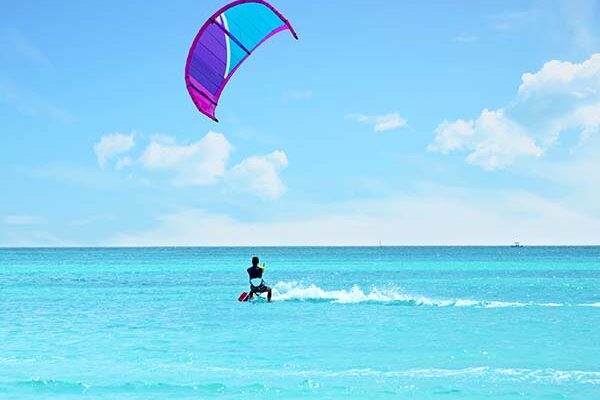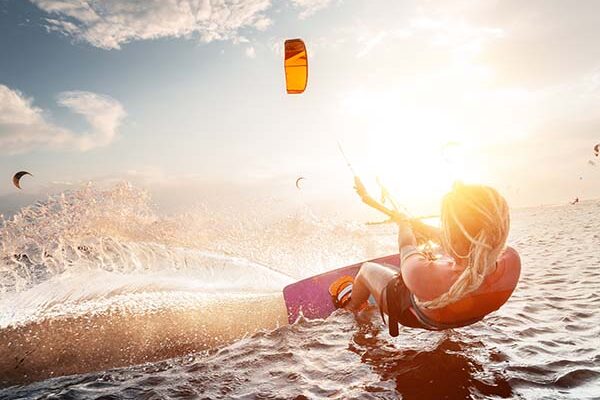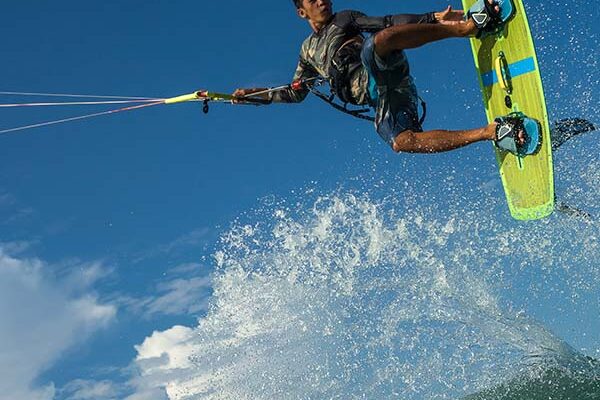When is the best time to go to Martinique for kitesurfing and wingfoiling?
Where to go kitesurfing and wingfoiling in Martinique?

Who to take kitesurfing and wingfoil lessons with in Martinique?
The choice of a kitesurfing and wingfoil school is crucial to ensure a safe and effective initiation to these sports. To begin with, it's essential to check the school's certifications, which attest to compliance with safety standards and the quality of teaching. Reviews and testimonials from former students can also guide your choice. The proximity of the practice location and the quality of the facilities should also be considered. Choose a school that provides modern equipment suitable for beginners. Finally, inquire about the student-to-instructor ratio: training in small groups will ensure more individualized attention and therefore faster progress.
The name of the company
Phone number
Address
History and Characteristics of Kitesurfing
The history of kitesurfing dates back to the 1970s when several patents for traction kites were filed. A notable evolution came from the Legaignoux brothers, who patented an inflatable kite in 1984. In the 1990s, various innovations and experiments popularized the sport. The Legaignoux brothers also launched Wipika, a company that played a central role in the commercialization of kitesurfing. Within a few years, the kitesurfing community grew from a handful to several thousand, with rapid growth in equipment sales.
Kitesurfing has also undergone regulatory developments, with standards put in place after serious accidents. Furthermore, equipment has improved over the years, increasing the safety and performance of the sport. There are also variations of kitesurfing practiced on other terrains, such as snowkiting on snow or kiteboarding with a mountainboard on land, as well as skitesurfing, wingfoiling, and kitefoiling. Although kitesurfing was considered for the 2016 Olympic Games, it was ultimately overshadowed by windsurfing.
Why take up kitesurfing?
The basics to start kitesurfing off right
How to properly ride upwind in kitesurfing?
Riding upwind in kitesurfing is essential to control your trajectory and navigate efficiently. To do this, it is crucial to be at least in the average wind range. This position ensures optimal kite traction, allowing for stable edge control. Regarding the kite's position, it should be set at an angle of about 45° to the water surface. This orientation ensures constant and balanced traction. Additionally, the body weight plays a crucial role: a balanced weight distribution on both feet is necessary for smooth and controlled upwind riding.
How to steer in kitesurfing?
Navigating in kitesurfing requires a combination of kite control and body positioning. To begin, the "control line," essential for kite maneuvering, must be securely anchored to the ground. Placing sand at its end helps stabilize it and prevents any unwanted movement. Next, position yourself so that your lines are angled at 45 degrees to the wind direction. This orientation is crucial for optimizing kite power and facilitating movement. Finally, by lowering your kite from the zenith towards the water, it generates more power, providing greater thrust. This dynamic allows you to navigate with precision and make the most of the wind energy.
How to waterstart in kiteboarding?
Getting out of the water in kiteboarding is a crucial step that requires specific coordination between kite movement and body positioning. To initiate this maneuver, start by pulling on your front hand, which is the left hand if you're on a port tack. This action directs the kite into the half-window, guiding it towards the power zone, where it captures the maximum wind energy. At the same time, slightly extend your front leg to help lift and stabilize your board. Meanwhile, the back leg should remain bent, acting as a pivot. This combination of movements, when well synchronized, will lift you efficiently out of the water, ready to glide over the waves with your kite.
What is Wingfoiling? What are its characteristics?
Contact us by email. Life in pink is at Villa Rosa Blanca, we're waiting for you!









